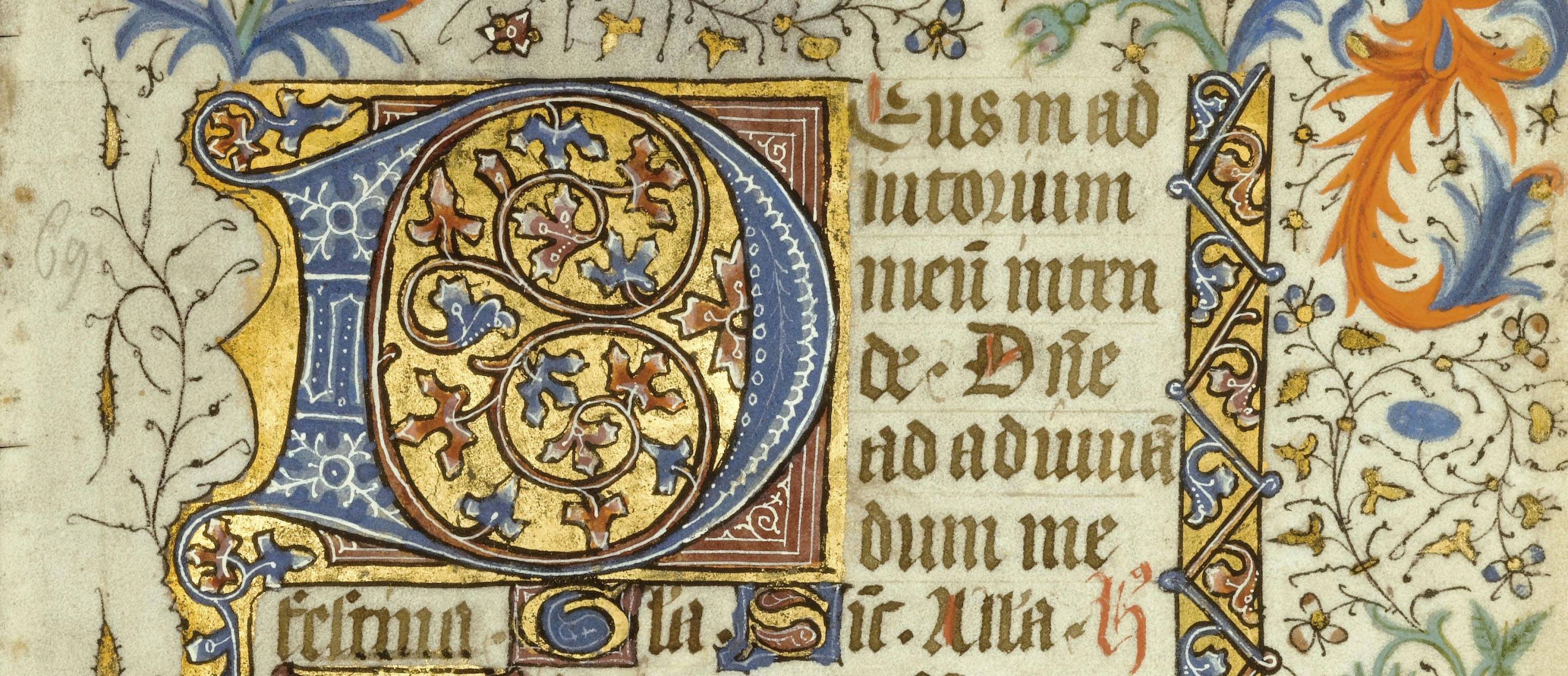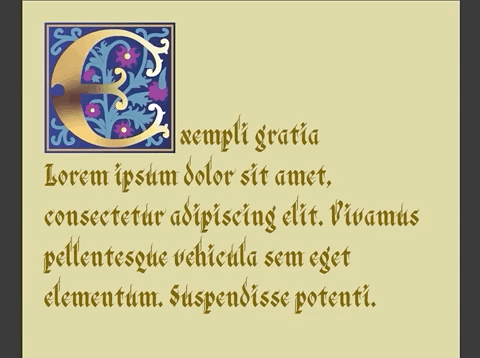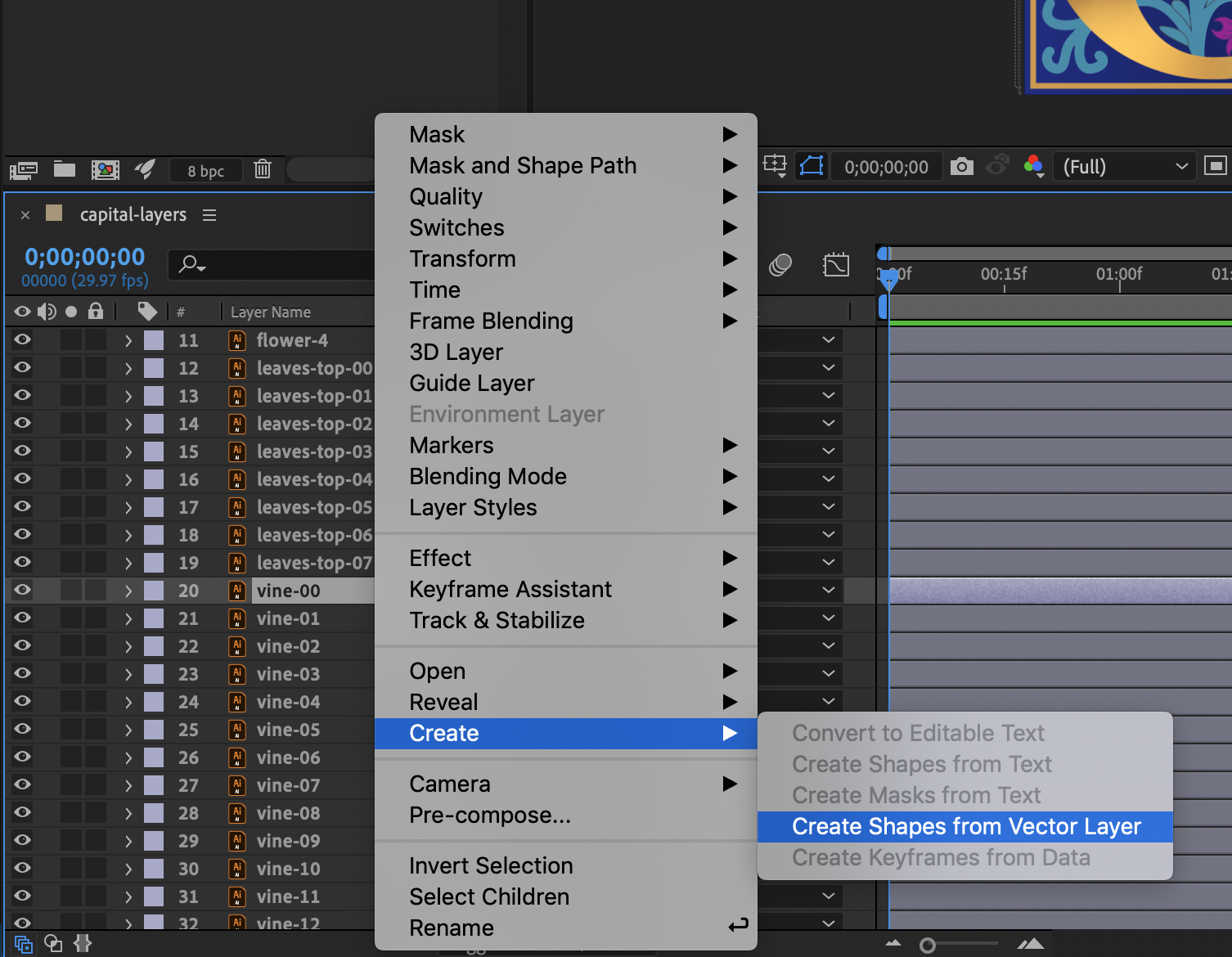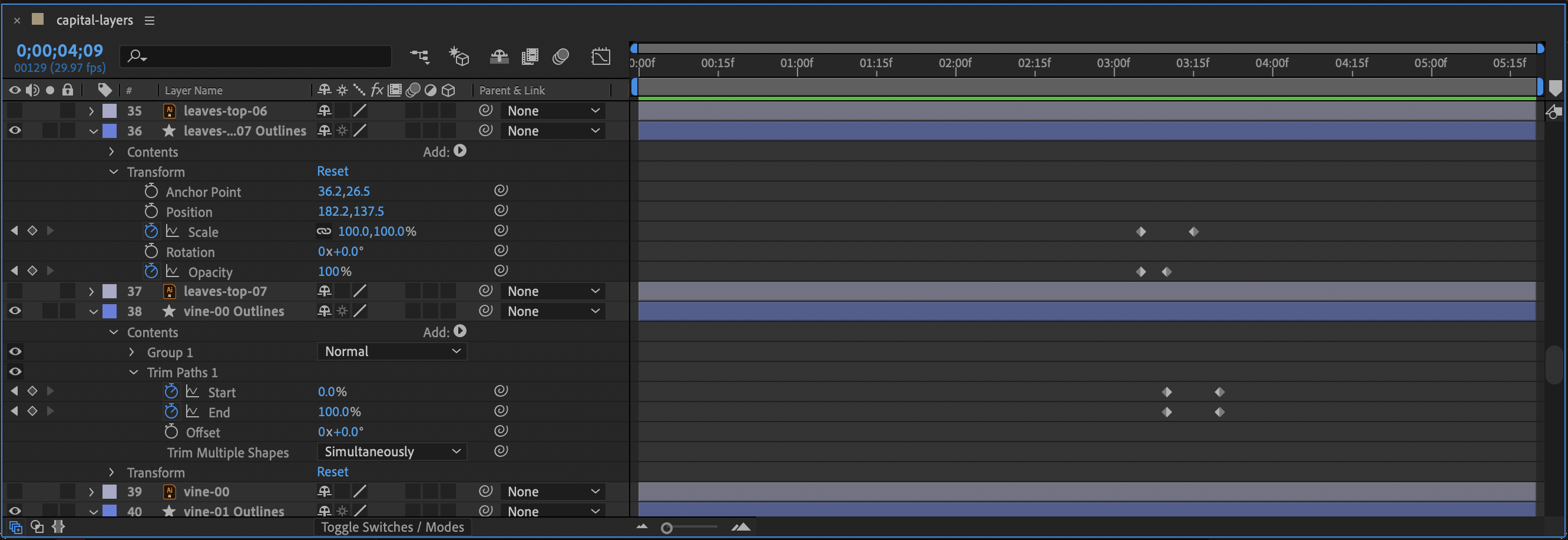Responsive Illuminated Manuscript

title: Responsive Illuminated Manuscript date: 2019-04-04 19:42:40 tags:
- JavaScript
- Animations
- Lottie
Overview
Back in the Middle Ages, must have been a spectacle to lay eye on an Illuminated Manuscript.

The fine illustrations, the rich decorative elements, and the beautiful capital letters, bring typography and art together.
After visiting the Getty's Manuscripts I started asking myself - what would a script look like on a web page? Given the incredible amount of minute details, how much could it be appreciated on different form factors?
It was fun to come up with a simple "responsive" example that changes the Level Of Detail (LoD) of the initial letter based on the width of the page, powered by the power of Lottie. Depending on the available width, I wanted to simplify the design, or show more intricacy.

Workflow
I started by identifying some states I wanted to map to small, medium, and large screen sizes.

After creating the graphics, I animated the shapes in After Effects in order to author the animation data to be used in Lottie. The animation timeline starts at the "small" state and progresses to the "large" state.
I didn't want to have any animation playing on load, and the state transition be something discoverable only by resizing your page.
Illustrator Workflow
I tried to create the letter in Illustrator identifying elements I wanted to show in each state:
- Capital E
- Vines
- Flowers
For all the vines I used the pen tool, this allows to animate the paths by defining a trimming offset as we'll see later on in After Effects.
To simplify the workflow, I prefer to separate each shape into its own layer. Make sure the artboard is configure correctly as it will determine the viewBox values of your SVG once exported.
To create the gold letter I used a freeform gradient, but this doesn't have any direct counterpart in the web world. These shapes will be rasterized and exported as images, but is good to have a clear understand of what features are not supported or are going to use image assets.
You can inspect the final Illustrator file here.
After Effects Workflow
Once the graphics were completed in Illustrator it was time to animate them in After Effects. Import your graphics as composition, and select Layer Size as Footage Dimension.
In your composition, select the layers you'd like to animates, right click and select Create ▶ Create Shapes From Vector Layer

You can now animate the Contents and the Transform for your graphics. In the Illuminated Manuscript animation I used only two techniques:
Trim Paths for the vines
Expand the shape layers and you'll see the Add button next to Contents.

Click it and select Trim Path. You can now animate the offset at the Start and End of the path.

Clicking on the stopwatch icon, you'll add a keyframe in the timeline. Play around with the start and end values to find something suitable for your graphics.
Transform for leaves and flowers
Animating leaves and flowers is more straightforward. I simply manipulated Scale, Rotation, and Opacity in the Transform group.
Here's what your layers might look like at this end of the process:

For this example I only used linear animations, but you can add a lot more character using easing curves. Try selecting the keyframes and add an Easy Ease curve (F9 + Shift) to notice the difference. The Graph Editor offers even greater control.
Finally, using the Bodymovin plugin, export the animation data for your composition.
You can inspect the final After Effects file here.
lottie-web workflow
To pull everything together I used lottie-web, and looked at react-lottie to get started.
I created a small react app to determine the initial state of the capital letter based on the width. When a resize event is triggered, based on the size of the page I decide whether the animation should play, and in which direction.
I subscribe to enterFrame events to check if the desired state is reached, and stop the playback. For more complex scenarios, you can also specify animation segments.
Source and Demo
You can check out the final project from github, or preview the CodeSandbox.
Conclusion
While admittedly unpractical, I hope you enjoyed the idea of animated typography in your pages. The execution could be improved, and depending on your needs, simple CSS animations, or even animating stroke-dashoffset property might suffice.
Interestingly enough, the SVG specs at one point defined animations (or SMIL - Synchronized Multimedia Integration Language), and there were proposals to support adaptive Leven of Detail graphics, but due the lack of support, and given how much easier is to author animations in After Effects, in my opinion Lottie is currently the best tool for the job.
Hope you enjoyed the write up, and took some time to admire an Illuminated Manuscript online.
